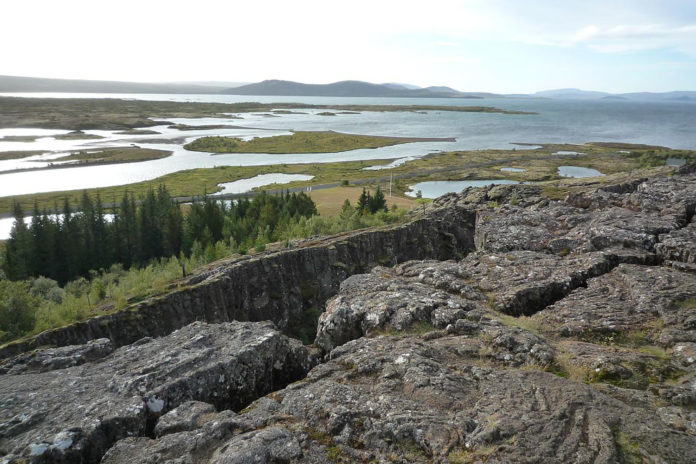Due to active plate tectonics, no direct rock archives cover the first ca. 500 million y of Earth’s history. Therefore, insights into Hadean geodynamics rely on indirect observations from geochemistry.
It has been assumed that vestiges of early geological processes on Earth can only be found as analogs on other terrestrial planets (Mercury, Venus, and Mars), asteroids, or the Moon. However, a new study by an international collaboration suggests that magmatic rocks that erupted throughout Earth’s history can still carry signatures that provide detailed information about the nature of the first crust.
The collaboration, which includes Earth scientists at the University of Cologne and Freie Universität Berlin, found that some magmas on Earth originate from mantle portions that contain remnants of Earth’s earliest crust. Those magmas made their way through the deep terrestrial mantle and erupted at Earth’s surface.
This ancient material must have been buried in a ‘graveyard’ of old and cold crust about 4 billion years ago and has endured since then, possibly since the massive impact that formed the Moon.
For the study, geologists studied rocks from southern Africa up to 3.55 billion years old. Small anomalies in the isotopic composition of the element tungsten (W) were discovered during the investigation of these rocks. The origin of these isotope anomalies, namely the relative abundance of 182W, may be traced back to geological processes shortly after the Earth was formed around 4.5 billion years ago.
Model calculations show that the observed 182W isotope patterns are best explained by recycling Earth’s earliest crust into mantle material that ascends via plumes from the lower mantle to generate lavas erupting at Earth’s surface.
Interestingly, the study shows that similar isotope patterns can be observed in distinct types of modern volcanic rocks. This demonstrates that Earth’s earliest crust is still buried in the lowermost mantle.
Geochemist Dr. Jonas Tusch from the University of Cologne’s Institute of Geology and Mineralogy said, “We assume that the lower layers of the crust — or the roots of the primordial continents — became heavier than their surroundings due to a geological maturation process and therefore sank into the Earth’s underlying mantle. Similar to a lava lamp.”
Dr. Elis Hoffmann of Freie Universität Berlin added, “This fascinating insight provides a geochemical fingerprint of the young Earth, allowing us to understand better how large continents formed over the history of our planet. It also explains how our current, oxygen-rich atmosphere evolved — setting the stage for the origin of complex life.”
The early Earth’s geochemical fingerprint can also be compared to results from other planets during space missions. Mars, for example, has a relatively ancient surface due to the lack of plate tectonics, and its composition may be similar to that of the young Earth, according to evidence from Mars missions and examinations of Martian meteorites.
Journal Reference:
- Jonas Tusch et al. Long-term preservation of Hadean protocrust in Earth’s mantle. DOI: 10.1073/pnas.2120241119
